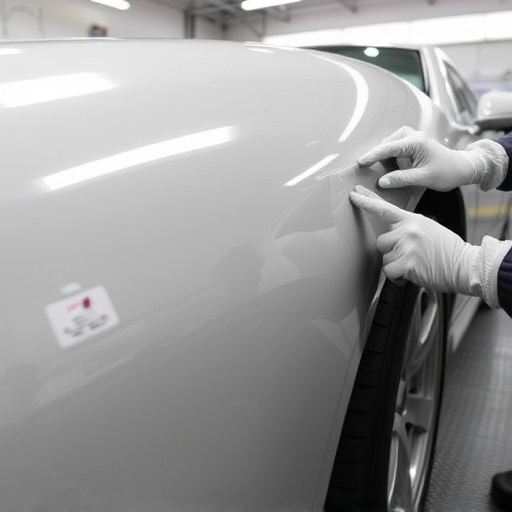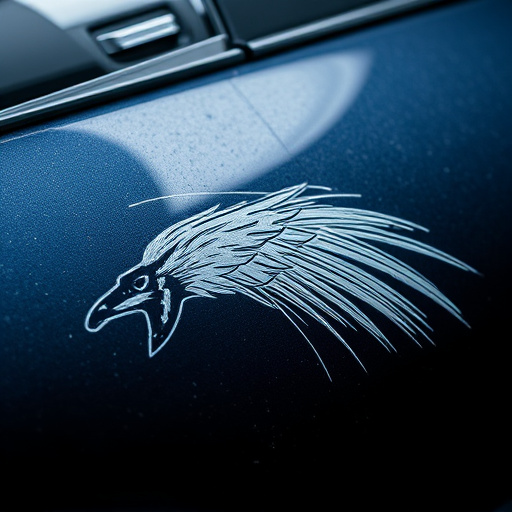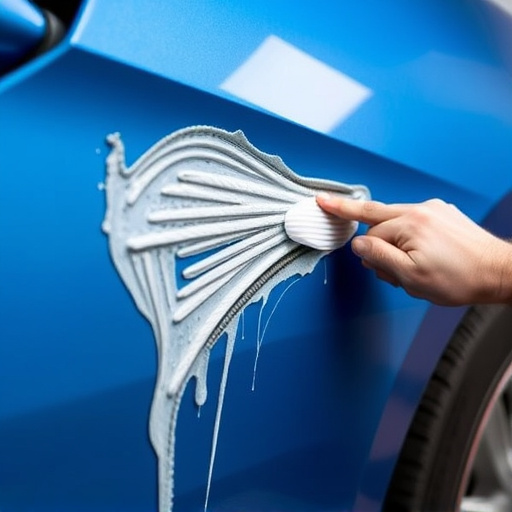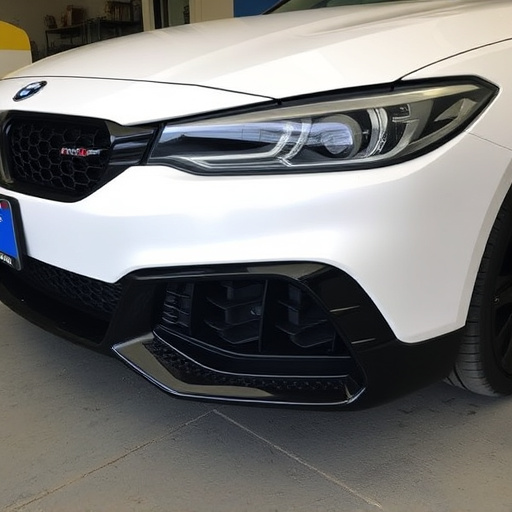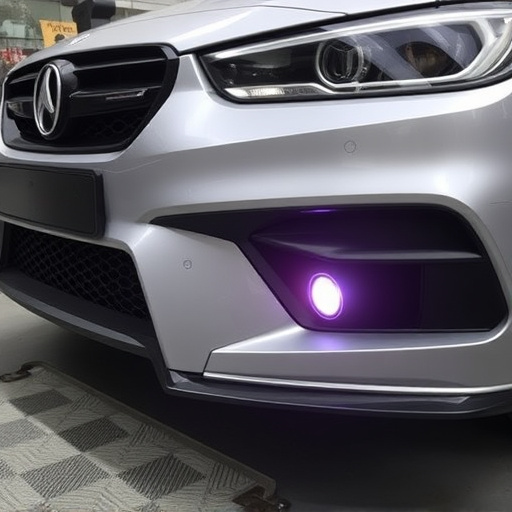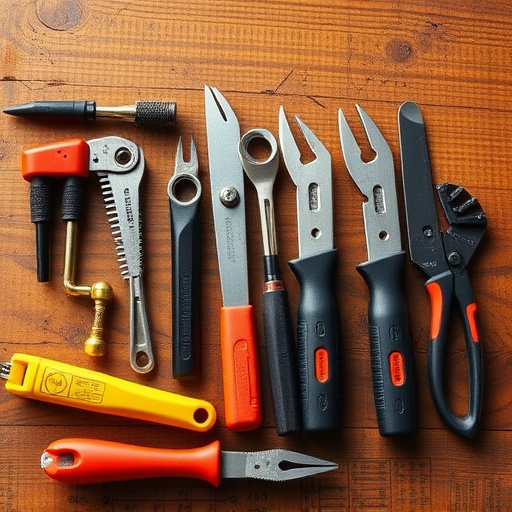Aluminum panel dent repair is a specialized technique for modern vehicles with aluminum bodywork. By using advanced tools like pneumatic hammers and heat guns, technicians can skillfully restore damaged panels to their original shape and finish without compromising structural integrity. Key methods include 'pinning' for shallow dents and heat/vacuum technology for deeper damage, ensuring both aesthetic improvement and vehicle safety. Reputable auto body shops specializing in this area offer cost-effective solutions, enhancing resale value through expert repairs.
Aluminum panel dent repair is a precision art, combining advanced science with skilled hands. Understanding the unique structure of aluminum panels—their thin yet durable composition and corrosion resistance—is crucial for effective repairs. This article delves into the science behind various aluminum panel dent repair techniques, exploring common methods like plastic deformation and cold forming alongside the molecular-level mechanisms that dictate their efficacy. Learn how these techniques restore damaged vehicles to their original sleekness.
- Understanding Aluminum Panel Structure and Dents
- Common Repair Techniques for Aluminum Panels
- The Science Behind Different Repair Methods and Their Efficacy
Understanding Aluminum Panel Structure and Dents
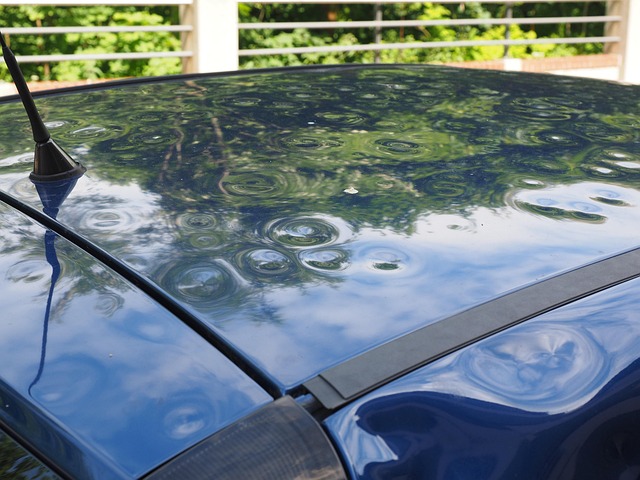
Aluminum panels are commonly used in modern vehicle construction due to their lightweight nature and corrosion resistance. However, these panels are susceptible to dents, especially when subjected to impact or road debris. Understanding the structure of an aluminum panel is key to effective dent repair. These panels consist of a thin outer skin bonded to a core, often made of lighter materials like polyethylene or foam. The bond between the skin and core is crucial, as any damage to this integrity can compromise structural strength.
Dents in aluminum panels can vary in depth and severity, from shallow indentations to deep deformities. Traditional body shop services for car dent repair often involve replacing the damaged panel, which can be costly and time-consuming. However, modern techniques like paintless dent repair offer a more efficient solution. This method leverages specialized tools and trained technicians to gently push the metal back into place without breaking the bond or damaging the surrounding panel, making it an effective and cost-friendly option for aluminum panel dent repair.
Common Repair Techniques for Aluminum Panels

Aluminum panel dent repair is a specialized technique that has evolved significantly over the years. Common repair techniques include using specialized tools like pneumatic hammers and mallets to gently pry the dented area back into place, followed by careful filling and smoothing with composite materials. This process, often referred to as ‘pinning’, is crucial for restoring the original shape and smooth finish of aluminum panels, which are commonly used in modern car bodywork due to their lightweight and corrosion-resistant properties.
In addition to pinning, auto detailing experts may employ a technique known as ‘pulled repair’ or ‘draw-back’. This involves heating the dented area with a heat gun, which allows the panel to shrink slightly, effectively pulling the dent out. For more severe dents, a combination of these methods might be used. Auto body services that specialize in aluminum panel dent repair often offer advanced tools and training, ensuring that the repairs not only look seamless but also maintain the structural integrity of the car’s bodywork, enhancing its overall durability and resale value.
The Science Behind Different Repair Methods and Their Efficacy
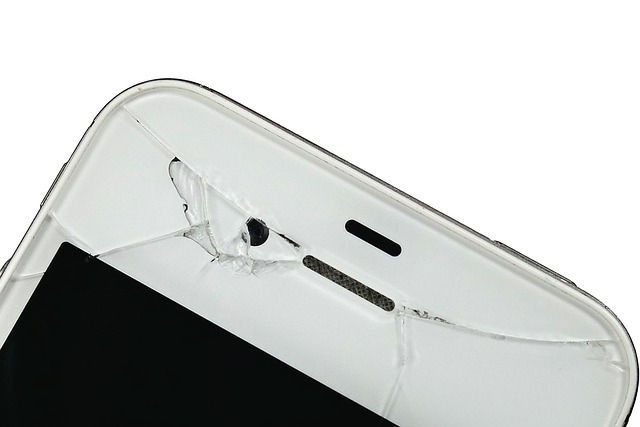
The science behind aluminum panel dent repair encompasses a variety of techniques, each with its own unique approach to restoring damaged surfaces. One widely used method involves using specialized tools to gently press and smooth out the dented area, returning the metal to its original shape. This process, known as “pinning,” is highly effective for shallow dents and leaves minimal traces of repair.
Another popular technique is the use of heat and vacuum technology. By applying heat to the dented panel, metal becomes more pliable, allowing technicians to use a vacuum cup to pull the dent out. This method is particularly useful for deeper dents that require more significant reshaping. While each technique has its advantages, their efficacy depends on factors like the severity of the damage, the size of the dent, and the skill of the repair technician. In an automotive collision repair setting, choosing the right approach ensures not just cosmetic restoration but also structural integrity, crucial for safety in a collision repair center.
Aluminum panel dent repair is a precise science, offering a range of techniques to address common damage. By understanding the unique properties of aluminum panels and leveraging advanced repair methods, professionals can effectively restore vehicles to their original condition. Each technique, from manual restoration to modern automated processes, has its merits and efficiency depends on factors like dent size, depth, and location. Continuous advancements in materials and technology ensure that aluminum panel dent repairs remain a vital aspect of the automotive industry, providing long-lasting solutions for car owners.

